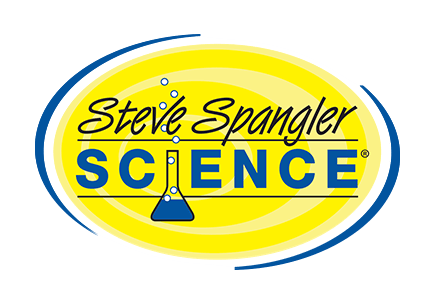Spot dots and magic coloring books – lessons we learn in kindergarten
Maywood Elementary kindergarten in Indiana is lucky to have Julie Gintzler. She performs magic tricks in the classroom, and here are two of them.
Take a magic coloring book you can get from any magic store or online. Flip through the pages the first time and the pages are blank. Then ask the children to rub their special magic crayon, which is of course invisible, on the cover of the book and the second time you flip through it — voila! Pictures appear. The third time the children rub their magic crayon on the book and you flip through again, suddenly the pictures are all bright, beautiful colors. How do you use this as a teaching experience?
Capture children’s attention with magic to draw them in. Do it early in the year. It sparks their imagination. It sets the tone for a year of science that is going to be fun and exciting and with something new around every corner.
Is it OK if children think science is magic? Absolutely. Once they start performing experiments of their own, they can self-discover that it is not magic, but something they can make happen. The secret behind a science magic trick is not strings or mirrors. The secret is scientific.
Julie’s second classroom experience is Spot Dot! As she sits down to read a story, she asks the children: “Wouldn’t it be wonderful if you could pull a red dot off this book”?. Magically, using Spot Dot you can. Spot Dot is a device which, when squeezed, will pull what looks like a dot off the book. Because it looks like your thumb, the kids don’t see it. In 18 years of teaching, Julie has never had kids rush up to see a book like this. It was amazing!
The greatest thing about doing magic in the classroom is you don’t share how it really works. It’s that sense of wonder and because teachers are supposed to be magical, especially in those first years of school. You want children to keep discovering that there are reasons why things happen. That gives them empowerment. That makes them feel special. So it’s best to keep some of those secrets to magic tricks to ourselves.

Listen to my podcast interview of Julie Gintzler sharing some magic tricks she uses in the classrom
(File size is 2.1 MB) (Show length 8 minutes 54 seconds)




Isn’t Spot Dot a copy of ‘D’lite’, a product for magicians that has been on the market for years?
Tim – Spot Dot is D’Lite. Steve Spangler Science has an agreement with Roger Mayfarth who invented D’Lite and marketed it to Rocco. I approached Roger and Rocco in February 2005 and we reached an agreement to market this product specifically to educators. As a magician, I wanted to make sure that both Roger and Rocco were in favor of sharing D’Lite with educators (given that it’s now being marketed to the masses in the toy industry). Here’s an excerpt from the printed instructions…
“The ‘secret thumb’ is actually the invention of Roger Mayfarth who designed the item specifically for the internationally known magician Rocco. Today, thousands of professional magicians use this device to entertain audiences throughout the world. Steve Spangler met with Roger and Rocco to discuss the idea of teachers using the device as a teaching aid in conjunction with pieces of well-known children’s literature. Both Roger and Rocco agreed to authorize and encourage the use of their invention for this purpose, but they did ask for one thing in return”¦
“Please ask teachers and parents to keep the workings of the Spot Dot a secret. It seems so simple – a thumb that lights up – but the magic it creates in the people who see it is amazing.”?
My mother Angeli Perrow has a self-published coloring book about lighthouses. This sounds like a really fun way to do a coloring book though. Little kids love magic!
I liked this quote :”Is it OK if children think science is magic? Absolutely. Once they start performing experiments of their own, they can self-discover that it is not magic, but something they can make happen. The secret behind a science magic trick is not strings or mirrors. The secret is scientific.”
I thinks its wonderful when kids think something is magical, and discovering its science doesn’t really take the magic away, just explains it 😉